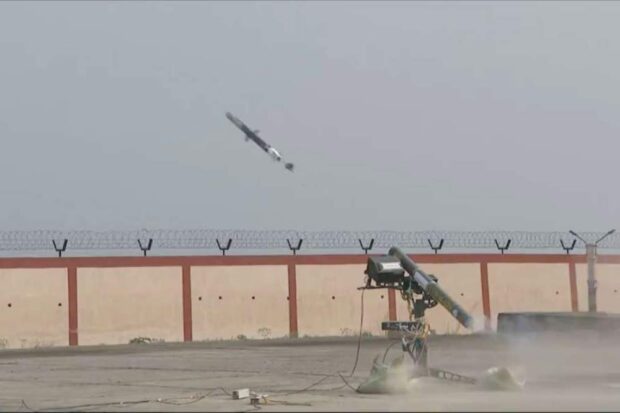India’s Defence Research and Development Organisation (DRDO) recently conducted a successful flight test of the Very Short-Range Air Defence System (VSHORADS). The test, which took place on February 28, saw the VSHORADS missile effectively engaging high-speed unmanned aerial targets off the coast of Odisha.
The trial, conducted off Odisha’s coast, marked a pivotal moment for India’s indigenous defense technology. The VSHORADS missile, designed to counter aerial threats in close proximity, showcased its prowess in intercepting high-speed unmanned aerial targets across various scenarios.
The success of this test underscores the DRDO’s commitment to advancing India’s defense capabilities through cutting-edge research and development. With increasing threats from unmanned aerial systems, the VSHORADS test signifies a crucial step toward bolstering India’s air defense mechanism. As the nation continues to prioritize indigenous defense manufacturing, such achievements reaffirm India’s position as a formidable player on the global defense stage.
The VSHORAD, short for Very Short-Range Air Defense, is a short-range air defense system designed to protect against nearby aerial threats. Originating from India, it is classified as both a Short-Range Air Defense (SHORAD) system and a man-portable air defense system (MANPADS).
Characterized by its lightweight and portability, the VSHORADS weighs approximately 20.5 kg and measures 2 meters in length. With a diameter of 90 mm and a wingspan of 32 cm, it is designed for easy transport and deployment in the field. Its propulsion system is powered by a dual-thrust rocket motor, allowing it to reach a maximum speed of Mach 1.5. Its operational range extends from 250 meters to 7 kilometers, with a maximum flight altitude of 3,500 meters.
The VSHORADS is equipped with a dual-band infrared imaging guidance system, allowing it to detect and track aerial targets with precision. Its detonation mechanism relies on an adaptive proximity fuze, ensuring maximum effectiveness upon impact. This system can be launched from a tripod or weapon platform, providing operational flexibility in various environments.
The success of the VSHORADS test against high-speed unmanned aerial targets off the coast of Odisha represents a significant milestone in India’s quest for self-reliance in defense technology. It paves the way for further advancements in air defense systems, ensuring the safeguarding of Indian airspace against emerging threats.
Photo: The VSHORADS missile, designed to counter aerial threats in close proximity, showcased its prowess in intercepting high-speed unmanned aerial targets – DRDO
Source: Army Recognition

